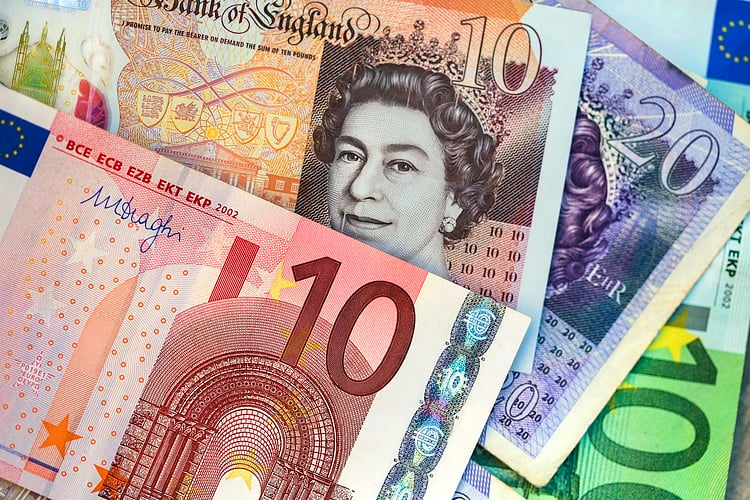- EUR/GBP retreats from intraday high after rising in the last four consecutive days.
- German Industrial Production growth contracts more than expected in June.
- Fears of downbeat UK employment conditions, economic fears about Britain check pair bears.
- UK Q2 GDP, second-tier data from Eurozone/Germany may entertain traders.
EUR/GBP takes a U-turn from the intraday high while challenging the previous four-day uptrend amid the initial hour of Monday’s European session. In doing so, the cross-currency pair justifies downbeat German Industrial Production (IP) data for June. However, fears about the UK’s employment and growth conditions put a floor under the quote of late.
That said, German Industrial Production figures for June dropped to -1.5% MoM versus -0.4% expected and -0.1% prior (revised) while the non-seasonally adjusted figures marked a 1.7% fall in German IP compared to 0.0% previous readings. During the last week, softer prints of the Eurozone inflation data contrast with an improvement in the bloc’s growth figures to allow the Euro to remain firmer versus the GBP.
That said, the chatters about the European Central Bank (ECB) peak rates were triggered by the global rating agency Fitch Ratings as it said on Friday that the falling Eurozone inflation puts the ECB rates peak within sight. On the same line was the ECB article which stated that the “underlying inflation likely peaked in the first half of 2023.”
On the other hand, the UK’s Recruitment and Employment Confederation (REC) survey, funded by the global quant giant KPMG, revealed downbeat employment conditions in Britain due to economic pessimism. “British employers reduced the number of new permanent staff they hired through recruitment agencies by the most since mid-2020 last month due to concerns about the economic outlook,” said the KPMG/REC poll.
It should be noted that the Bank of England (BoE) matched market forecasts by lifting the benchmark interest rates to the highest level in 15 years with a 0.25% increase to 5.25%. However, the policymakers appear divided and drowned the British Pound (GBP) despite the hawkish move.
Looking forward, German inflation will join Eurozone second-tier statistics to entertain the EUR/GBP moves. However, major attention will be given to the first readings of the second quarter Gross Domestic Product (GDP), especially amid the fears of the UK’s economic slowdown and labor market crunch.
Technical analysis
A daily closing beyond the 50-day Exponential Moving Average (EMA), around 0.8615 at the latest, joins the bullish MACD signals and upbeat RSI (14) line to keep the EUR/GBP buyers directed toward the 100-EMA hurdle of 0.8655. However, the bulls are likely to remain cautious unless witnessing a clear upside break of the descending resistance line from late April, close to 0.8665 by the press time.













